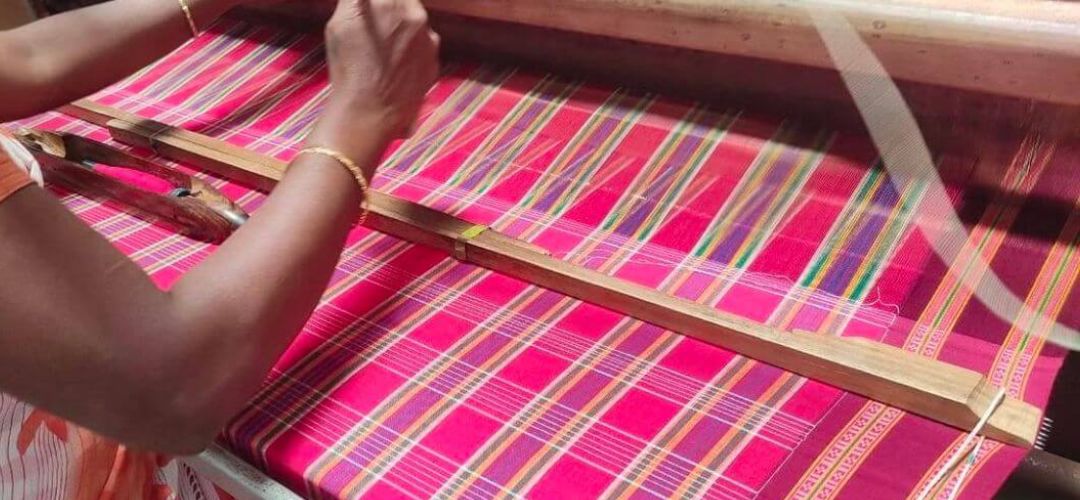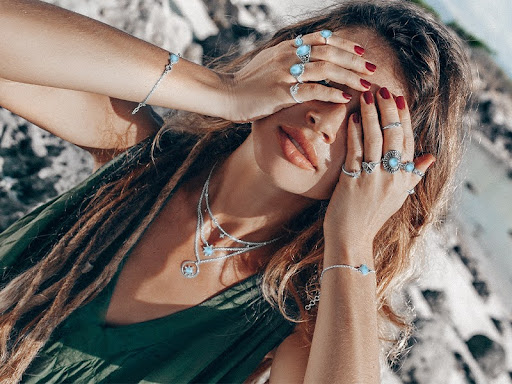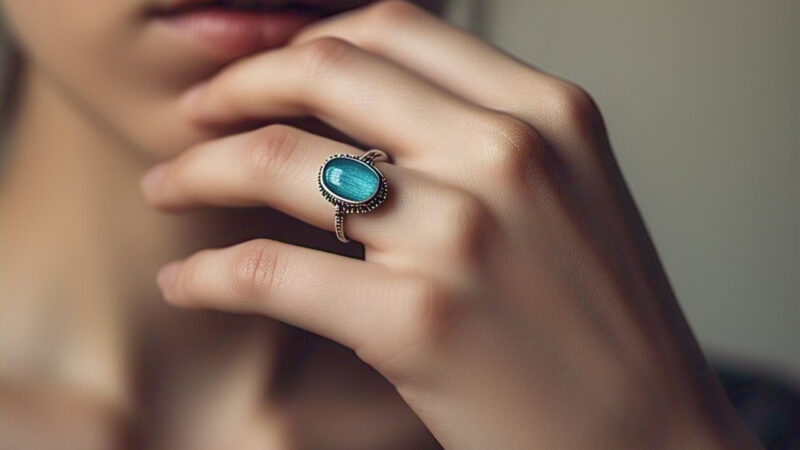Kunbi Sarees of Goa: Weaving Heritage into Threads of Identity

Goa, often celebrated for its beaches and vibrant nightlife, hides within its scenic hinterlands a lesser-known but culturally rich treasure — the Kunbi saree. Deeply rooted in the traditions of the Kunbi tribal community, these sarees are not just garments but living embodiments of Goan history and resilience. As modern India reawakens to its textile legacy, the Kunbi sarees of Goa are making a poignant comeback, woven with narratives of revival, dignity, and pride.
The Origin of Kunbi Sarees: A Working Woman’s Fabric
The Kunbi tribe is among the earliest settlers of Goa, and their attire reflects their hardworking agrarian lifestyle. Designed to meet practical needs, the Kunbi saree is a short-length, durable, and breathable cotton weave. Traditionally, it was worn in a unique way — tucked between the legs like a dhoti — to allow free movement in fields and plantations.
These sarees were handwoven in earthy tones like brick red, black, and white with minimalistic yet striking checkered patterns. The simple aesthetic matched the no-fuss, grounded lifestyle of the community. But beyond functionality, the Kunbi saree of Goa has always carried cultural symbolism — from marital status to community identity.
Colonial Erasure and Cultural Silence
With the advent of Portuguese colonialism in Goa, many indigenous practices, including attire, were either diluted or discouraged. The traditional Kunbi saree began fading from the mainstream as Westernized clothing gained popularity and economic shifts marginalized rural weavers.
For decades, Kunbi women quietly wore their heritage at home, but the wider Goan society began viewing the saree as outdated or rustic. With time, the knowledge of weaving techniques, dyeing processes, and draping styles began to vanish from collective memory.
The Revival: Weaving a New Chapter
The story of the Kunbi sarees Goa would have ended in silence if not for revivalists and local activists. Among the most influential figures in this movement was Wendell Rodricks, a globally renowned fashion designer and Goan native. Deeply committed to preserving his homeland’s textile heritage, Rodricks researched the history of the Kunbi saree and worked to reintroduce it into contemporary fashion with respect to its roots.
He collaborated with local weavers and artisans, not to commercialize the saree but to restore it as a cultural symbol. Under his guidance, traditional handwoven patterns were preserved, but the palette and textures were slightly modernized to appeal to broader tastes.
Today, brands and cooperatives in Goa are working hand-in-hand with tribal communities to produce authentic Kunbi sarees, blending heritage with innovation.
The Weaving Process: A Labor of Love
Each Kunbi saree is handwoven using cotton threads, dyed in natural colors. The hallmark of the fabric is its checkered pattern, achieved through the interweaving of colored yarns on manual looms. The entire process — from spinning and dyeing to weaving and finishing — is carried out by skilled weavers, many of whom come from generations of artisans.
The sarees usually measure about 5 yards and have a narrow width, reflecting the traditional handloom settings in Goan villages. Unlike the heavily embellished sarees found elsewhere in India, Kunbi sarees are known for their humble charm, breathable quality, and ease of movement.
Style Meets Sustainability
In an age of fast fashion and synthetic materials, the Kunbi saree Goa stands out as a beacon of sustainability. It uses natural dyes, zero electricity in traditional weaving, and biodegradable cotton — making it an eco-conscious choice for mindful consumers.
Moreover, the growing popularity of Kunbi sarees is supporting rural livelihoods, particularly for women in the tribal belts of Goa. Through government schemes and NGO involvement, many weavers are now getting fair prices, training, and market access.
Fashion influencers and slow fashion advocates have also begun showcasing Kunbi sarees of Goa at national and international platforms. They’re being draped at literary festivals, heritage walks, and art events — often paired with modern blouses or styled in fusion looks.
The Modern Kunbi: Identity and Expression
Today, the Kunbi saree Goa is more than a piece of clothing. For many, it’s a statement of reclaiming identity. Young Goan women are choosing to wear Kunbi sarees during festivals like Shigmo, traditional weddings, and even on Independence Day — asserting pride in indigenous roots.
For fashion enthusiasts across India, the saree’s rustic charm and historical depth offer an alternative to mass-produced ethnic wear. The minimal checkered pattern and earthy tones blend seamlessly with boho-chic and contemporary styles, giving the saree both a heritage and a global appeal.
Even men are joining the movement by supporting Kunbi textile-based kurtas, stoles, and shirts — bringing the tribal weave into gender-fluid fashion spaces.
Challenges Ahead
While the resurgence of the Kunbi sarees Goa is heartening, challenges persist. Many tribal weavers still lack adequate support in terms of funding, market access, and quality training. There’s also the risk of cultural appropriation — where designers commercialize the aesthetic without acknowledging or benefiting the communities behind it.
To preserve authenticity, it’s essential that Kunbi sarees remain rooted in community involvement. Policy initiatives, craft documentation, and ethical fashion collaborations are key to sustaining this revival in the long term.
Where to Buy Kunbi Sarees in Goa
If you’re visiting Goa and want to bring home a piece of its soul, look beyond the beach shacks and flea markets. Authentic Kunbi sarees of Goa are best bought from government emporiums, women’s self-help groups, or cooperatives like:
- The Kunbi Weavers Cooperative Society
- Goa Handicrafts, Rural & Small Scale Industries Development Corporation (GHRSSIDC)
- Museum shops in Goa Chitra or Houses of Goa
Many local fashion designers also showcase limited-edition Kunbi-inspired collections that support artisans directly.
Final Threads: Why Kunbi Sarees Matter
In a time when regional identities are being rediscovered and celebrated, the Kunbi sarees Goa are a powerful reminder that true fashion is never fleeting. It is woven into the stories, soil, and spirit of a people.
These sarees aren’t just garments — they are oral histories in fabric, stitched with threads of resistance, revival, and resilience. Wearing one is not just a style choice; it’s a tribute to Goa’s indigenous women and their indelible place in the state’s cultural fabric.
So the next time you think of Goa, let your mind wander not only to its waves and sunsets, but also to the rhythmic clatter of looms, the hands of a weaver, and a saree that tells a story centuries old — the Kunbi saree of Goa.






